Food
 Food Around Us
Food Around Us
Good food is all around us. For generations, Indians have incorporated biodiversity in their daily food—using millets instead of wheat or rice; eating vegetables sourced from forests rather than farms, eating local food and changing their diet with changing seasons.
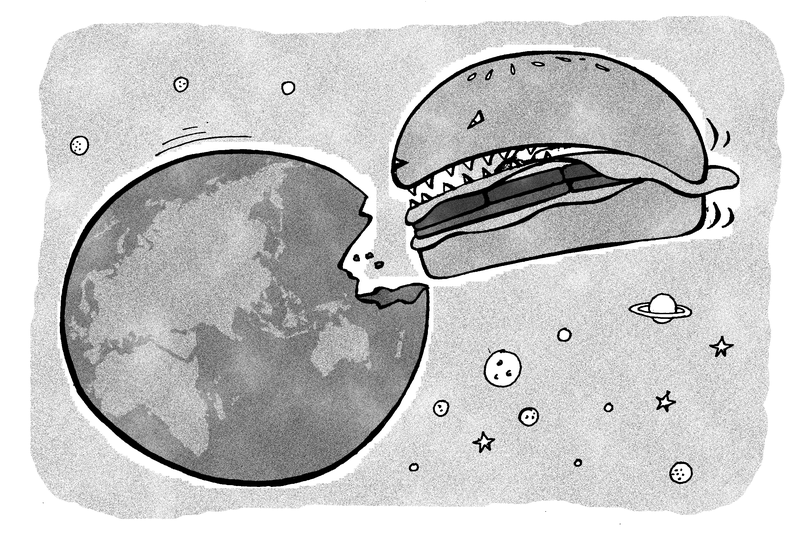
India is one of the biodiversity-rich countries and home to nearly 12 per cent of the world’s plant species. People in the biodiversity-rich areas have an immense understanding of the plants that grow around them. Each region of the country has its special cuisine based on the plants available in the area.
Many biodiverse foods have medicinal properties. They are rich in micronutrients, help people fight disease and keep them healthy in changing seasons. It was for food that people protected their environment. When crops were cultivated, they were grown naturally, without the use of agrochemicals. In rural areas, people often do not have to buy food and this provides nutrition security. There is some evidence that people living in places where food is available in traditional sources are healthier.
Access to good food has decreased drastically. Most traditional food cannot be stored and it is difficult to market them. People no longer have access to forests and kitchen gardens are fast disappearing, particularly in urban areas. In many places, environmental damage has decimated the biodiversity.
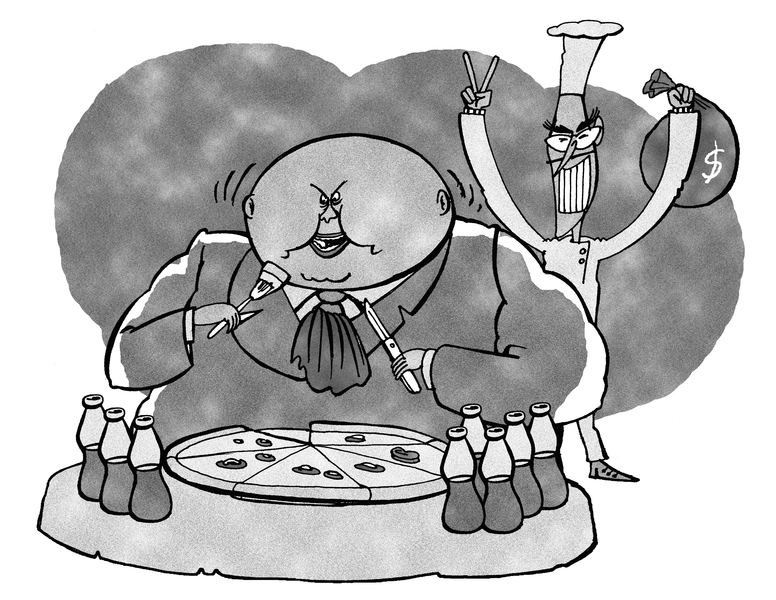 Child Health And Food Policy
Child Health And Food Policy
Food has been at the centre of policy debate in India for many years, as more than 20 per cent of the country’s population suffers from undernourishment.
India ranks 97th out of 118 countries in the 2016 Global Hunger Index. It ranks 120th among 128 countries with data on under nutrition during 2009-13; 30.7 per cent of the country’s children are underweight (an improvement from 43.5 per cent in 2005-06). Data from targeted studies show an alarming trend. The HUNGaMA (Hunger and Malnutrition) report covering 112 worst-performing districts in nine states tells us that 42 per cent children are underweight, 58 per cent are stunted and 11.4 are ‘wasted’ by the age of 24 months.
Meanwhile, childhood obesity is also alarmingly on the rise globally as well as in India. The International Obesity Task Force (IOTF) of WHO estimates that 10 per cent of children aged 5-17 years worldwide are overweight.
India therefore faces a peculiar crisis that spans both ends of the spectrum of nutritional disorders—while 30.7 per cent of the country’s children are underweight, according to the International Association for the Study of Obesity’s world map of obesity, overfeeding is evident as overweight and obesity has been recently on the rise and is present in 20.6 per cent boys and 18.3 per cent girls in India.
Given India’s dubious distinction of carrying the twin burden of under nutrition and overfeeding, we need to be extra cautious. In a bid to beat hunger, we are losing out to the deadly parasite of ultra-processed food, without realizing how harmful it actually is. Yes, craving for ultra-processed food is a global epidemic.


● The highest level of total fat was found in an Indian snack (Haldiram’s aaloo bhujia): 37.8 gm/100 gm of the sample
● Trans-fat content was the highest in french fries (8.1 per cent of the total fat), followed by instant noodles (4.6 percent of the total fat) and potato chips (4.5 per cent of the total fat)
● Salt content was the highest in instant noodles (3.7 gm/100 gm of sample). Eating a packet of instant noodles, therefore, will cover about half of the daily salt quota. The salt content is not declared by the companies on the label
● The highest level of carbohydrates was detected in Top Ramen noodles at 73.3 gm per 100 gm
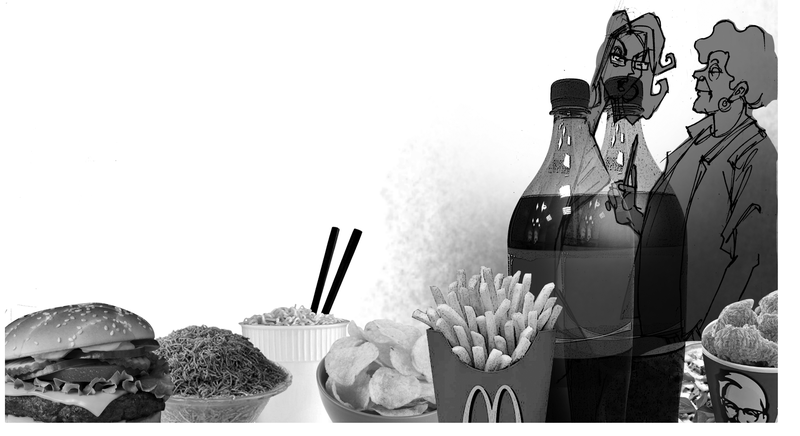
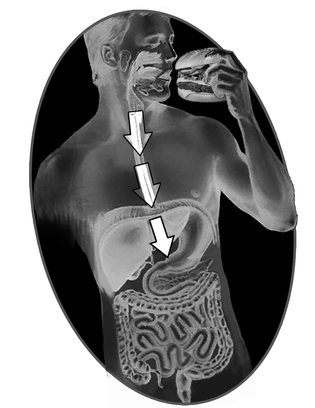
● Diets low on nutrients and high on salt and fat are directly blamed for ill-health. According to who, approximately 3 per cent of deaths worldwide are attributed to low fruit and vegetable consumption.
● High consumption of saturated fats and trans-fatty acids is linked to heart disease.
● High salt consumption causes high blood pressure and hikes up the risk of cardiovascular disease.
Balanced Diet
According to the ‘Dietary Guidelines for Indians, 2011’ of the National Institute of Nutrition (NIN), a balanced diet is one that provides all nutrients in required amounts and proper proportions. It should provide around 50-60 per cent of the total calories from carbohydrates, about 10-15 per cent from proteins and 20-30 per cent from both visible and invisible fat. In addition, it should provide other non-nutrients such as dietary fibre and antioxidants that bestow positive health benefits.
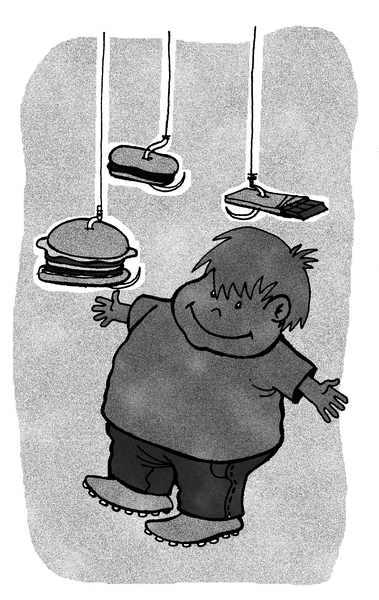
Canteen Policy
Food services like school canteens or midday-meal service is an important health resource for schools, especially the student community. When food is consumed daily, the food provided through the school canteen or midday meal comprises a third of a person’s total daily intake and has a significant influence on health and nutrition.
It is important that parents, teachers and students work together to support a whole-school approach to building a school culture in which students actively choose ‘good food’ for a healthy lifestyle.
Canteens in schools should not be treated as commercial outlets. They have a social responsibility towards inculcating healthy eating behaviour. They can be used to motivate children to consume healthy and hygienic food.
DID YOU KNOW?
- Bad food and lifestyle are major causes of non-communicable diseases, such as hypertension, diabetes and cardiovascular ailments.
- While globally, the upper range of Body Mass Index (BMI) for a normal adult is 24.99kg/m2, Indians can afford to go up to only 22.99kg/m2 because they have higher body fat at a lower BMI.
- Poor diets slow growth, decay new teeth, promote obesity and sow the seeds of infirmity that ultimately lead to incurable illnesses.
- Food containing low nutritional value tends to reduce IQ levels in children.
- The caffeine used in soft drinks is artificial. Mildly addictive, this stimulant drug used in soft drinks as a flavouring agent. Most ultra-processed packaged food is not good for your health







